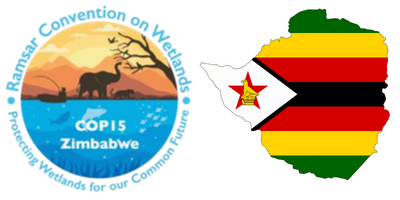Mana Pools National Park

Mana Pools National Park is a 219,600-hectare wildlife conservation area and national park in northern Zimbabwe’s Hurungwe District, under ZimParks’ Mid-Zambezi Region, Mashonaland West Province. It is in a section of the lower Zambezi River in Zimbabwe where the floodplain turns into a broad expanse of lakes after each rainy season. As the lakes gradually dry up and recede, the site attracts many large animals in search of water, making it one of Africa’s most renowned game-viewing areas. Mana Pools National Park was inscribed as a UNESCO World Heritage Site (Natural: vii; ix; x) in 1984 together with Sapi and Chewore Safari Areas and are part of Man-and-Biosphere Reserve (MAB).

The Mana Pools were designated a Ramsar wetland of international importance on 3 January 2013. Mana Pools National Park is a World Heritage Site based on its pure wilderness and beauty. It is home to a wide range of mammals, over 350 bird species, and aquatic wildlife and is one of the world’s wildest and best preserved natural ecological areas. Mana means ‘four’ in Shona, in reference to the four large permanent pools formed by the meanderings of the middle Zambezi. These 2,500 square kilometres of river frontage, islands, sandbanks and pools, flanked by forests of mahogany, wild figs, ebonies and baobabs, is one of the least developed national parks in Southern Africa. It has the country’s biggest concentration of hippopotami and crocodiles and large dry season mammal populations of the zebra, elephant and Cape buffalo. The area is also home to other threatened species including the lion, cheetah, Cape wild dog, and near-threatened species including leopard and the brown hyena.
When the area was inscribed by UNESCO, it was one of the most important refuges for the black rhinoceros populations in Africa, with about 500 animals. By 1994, poaching had reduced these to just 10 remaining rhinos, which were removed to another area for their protection. The area’s ecology is affected by the regulation of the Kariba Dam. The park is contiguous with Zambia’s Lower Zambezi National Park on the opposite side of the Zambezi River, with which together with neighbouring Protected Areas and Communal lands form the LOZAMAP Transfrontier Conservation Area (TFCA).
Ramsar Sites
Services & More
Wetlands are vital for human survival. They are among the world’s most productive environments; cradles of biological diversity that provide the water and productivity upon which countless species of plants and animals depend for survival.
Wetlands are indispensable for the countless benefits or “ecosystem services” that they provide humanity, ranging from freshwater supply, food and building materials, and biodiversity, to flood control, groundwater recharge, and climate change mitigation.
Yet study after study demonstrates that wetland area and quality continue to decline in most regions of the world. As a result, the ecosystem services that wetlands provide to people are compromised.
Managing wetlands is a global challenge and the Convention presently counts 172 countries as Contracting Parties, which recognize the value of having one international treaty dedicated to a single ecosystem.
The Convention uses a broad definition of wetlands. This includes all lakes and rivers, underground aquifers, swamps and marshes, wet grasslands, peatlands, oases, estuaries, deltas and tidal flats, mangroves and other coastal areas, coral reefs, and all human-made sites such as fish ponds, rice paddies, reservoirs and salt pans.
Zimbabwe's Vision 2030 aims to transform the country into a middle-income economy that is prosperous, inclusive, and sustainable. Central to this vision is the recognition of the importance of natural resources, including wetlands, in contributing to the nation’s socio-economic development and environmental health. Wetlands are vital ecosystems that support biodiversity, water security, climate resilience, and the livelihoods of communities.
As part of its commitment to sustainable development and environmental stewardship, Zimbabwe has incorporated the conservation and sustainable management of wetlands into its National Development Strategy 1 (NDS1), which covers the period from 2021 to 2025. The NDS1 serves as the country’s blueprint for achieving Vision 2030 and outlines key objectives, strategies, and actions to foster economic growth, environmental protection, and social well-being.
